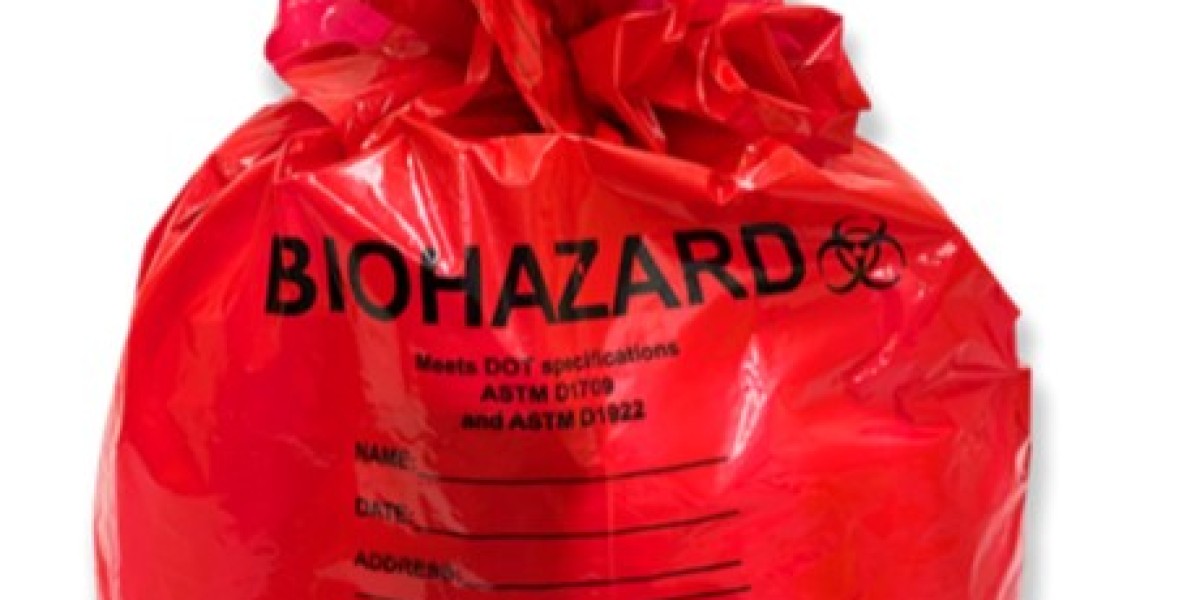In our increasingly health-conscious world, proper disposal of hazardous materials is a prime concern across various sectors. Biohazard bags play a crucial role in facilitating safe and compliant waste management, protecting both public health and the environment. Understanding the different types of biohazard bags, particularly the Biomedical waste bags in India, and their appropriate applications is essential for healthcare institutions, laboratories, and other industries dealing with biohazardous materials.
Understanding Biohazard Waste
Before diving into the types of biohazard bags, its essential to understand what constitutes biomedical waste. Biomedical waste refers to any waste that is generated in healthcare facilities, laboratories, or research facilities and poses potential threats to human health and the environment. This includes items contaminated with blood, body fluids, infectious agents, or sharp objects like needles and scalpels.
Given the risks associated with improper disposal, regulations are in place in various countries, including India, to ensure that biomedical waste is stored, handled, and disposed of safely. A critical component of this process is the use of appropriately designed biomedical waste bags.
Types of Biohazard Bags
1.Red Plastic Biohazard Bags
Red plastic biohazard bags are commonly used for the disposal of biomedical waste. These bags are durable, puncture-resistant, and designed to contain potentially infectious materials. In India, biomedical waste bags are often red and printed with biohazard symbols to denote their hazardous content clearly. They are ideal for collecting items like used gloves, contaminated materials, and non-sharp waste that may pose a biological risk.
Uses:
- Hospitals and clinics for general biomedical waste
- Research laboratories for disposing of contaminated materials
- Dental clinics for extracting wastes like gauze, gloves, and unused materials
2.Yellow Biohazard Bags
Yellow biohazard bags are specifically designed for highly infectious waste, including human anatomical waste, cultures, and other hazardous materials. These bags must adhere to strict local and international waste classification standards. Blood-soaked items and any waste that could contain significant pathogens are typically disposed of in yellow bags.
Uses:
- Major hospitals and trauma centers for anatomical waste
- Research labs handling virulent microorganisms
- Mortuaries for containing potentially infectious remains
3.Sharp Waste Containers
Although not bags in the traditional sense, sharps containers are a vital aspect of biohazard waste management. These puncture-proof containers are used for the disposal of sharp items like needles, blades, and other objects that can pierce regular plastic bags. Once full, they are sealed and disposed of according to hazardous waste protocol.
Uses:
- Hospital wards for disposing of needles and syringes
- Clinics for sharp instruments and disposal of used scalpels
- Laboratory settings for handling hazardous materials safely
4.Blue Biohazard Bags
Blue biohazard bags are less common but serve specific purposes in some industries. These bags are used for collecting waste from pathology labs, where specimens or body parts may need to be kept for further examination before disposal. Blue bags denote a lower-risk biohazardous material and are also effective for separating non-infectious biomedical waste from other types of waste.
Uses:
- Pathology labs for specimen disposal
- Research settings for low-impact biological waste
- Select hospitals for specific waste streams
5.Biohazard Bags with Liners
These specialized Bio medical waste bag comes with an inner liner, typically made of a stronger material to ensure puncture resistance. They are particularly useful in facilities where the potential for breakage or tearing is high. The liner helps collect and contain materials safely, facilitating easier handling and disposal without contamination.
Uses:
- High-volume medical waste generators like large hospitals
- Research laboratories dealing with various biological specimens
- Blood banks for collecting and storing hazardous waste
6.Decontamination Bags
Decontamination bags are designed for items that may have been exposed to hazardous biological materials but need to be cleaned before disposal. Typically used in containment areas, these bags are often bright-colored and clearly labeled to avoid confusion.
Uses:
- Hospital burn units for equipment contaminated with biological markers
- Laboratories after decontamination processes
- Emergency response teams for medical responses
Importance of Proper Waste Disposal
In India, regulations governed by the Bio-Medical Waste Management Rules, 2016, set stringent guidelines for the disposal of biomedical waste. Adhering to these rules is essential not only to ensure public health but also to protect the environment. Proper segregation and disposal of biomedical waste bags prevent the spread of infections, reduce environmental contamination, and promote responsible waste management.
Facilities that fail to adhere to best practices and regulations risk severe penalties, including the potential revocation of licenses. Therefore, using appropriate biomedical waste bags, such as the bio medical waste bags mentioned earlier, is not only good practice but a legal requirement.
Conclusion
The importance of using the right type of biohazard bags cannot be overstated. Whether its red plastic bags for general waste, yellow bags for highly infectious materials, or specially designed sharp waste containers, each type of bag fulfills a specific role in waste management. As further advancements occur in healthcare technology and adherence to regulations becomes more crucial, understanding and implementing proper disposal methods, such as those found in Bio medical waste bags in India, will remain an essential aspect of public health safety.
Innovations and improvements in materials used for biohazard bags will likely emerge to meet the evolving needs of various industries. Similarly, further education and training about proper waste disposal will benefit healthcare professionals and technicians in maintaining safety standards.
By choosing the right biohazard bag and following disposal guidelines, we contribute to a safer environment and promote better health outcomes for ourselves and for future generations.
Frequently Asked Questions (FAQs)
Are there different colors for biohazard bags?
Yes, biohazard bags come in various colors, typically red or yellow, depending on the type of waste they are designed to contain. Different industries may have specific color-coding systems.
How should biomedical waste bags be labeled?
Biomedical waste bags must display clear biohazard symbols and labels indicating the type of waste contained within, complying with local regulatory requirements.
What is the difference between general medical waste and hazardous waste?
General medical waste may include non-hazardous items such as regular office waste, while hazardous waste includes materials that are infectious, toxic, or otherwise dangerous to human health or the environment.








